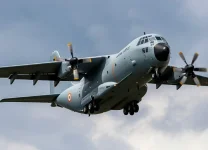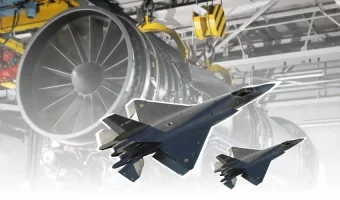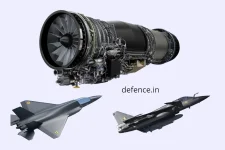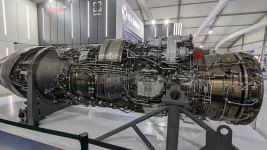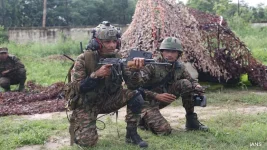- Views: 381
- Replies: 13
The Astra Mk1, India's premier indigenous beyond-visual-range air-to-air missile (BVRAAM), has become a vital asset for the Indian Air Force (IAF).
Developed by the Defence Research and Development Organisation (DRDO), this missile, with its range of up to 110 km, currently equips frontline fighters like the Sukhoi Su-30 MKI and the Tejas Mk1A.
However, to counter evolving regional threats, including stealth aircraft and advanced electronic warfare, a proposal is gaining traction for the development of a new variant equipped with an Imaging Infrared (IIR) seeker.
Such a missile, tailored for close and medium-range combat, could fill a critical gap in India's air-to-air capabilities and significantly enhance the nation's military self-reliance under the Atmanirbhar Bharat initiative.
Addressing a Strategic Gap in Air Combat
The IAF's current missile arsenal consists of long-range radar-guided missiles like the Astra Mk1 and short-range heat-seeking missiles for dogfights. This leaves a capability gap in the medium-range combat zone, spanning approximately 20 to 50 kilometres.A modern, domestically produced missile is needed for this role.
An IIR-guided variant of the Astra would function similarly to the highly regarded British ASRAAM (Advanced Short-Range Air-to-Air Missile), which is used by the IAF on its Jaguar jets.
An Indian equivalent would provide pilots with a versatile weapon effective in both close-quarters dogfights and short-to-medium-range engagements beyond visual sight.
Countering Advanced Threats from Stealth and Electronic Warfare
Modern air warfare increasingly features stealth fighters, such as China’s operational J-20 Mighty Dragon, and advanced electronic countermeasures (ECM) designed to jam and confuse radar-guided weapons.Missiles that rely on active radar homing can be less effective in such an electronically contested environment.
An Imaging Infrared seeker offers a powerful solution. Instead of relying on radar waves, an IIR missile homes in on the heat signature of an enemy aircraft's engine and airframe.
This passive guidance method makes it immune to radar jamming and highly effective against low-observable stealth targets, which still generate significant heat.
An IIR Astra would provide a crucial tool for engaging stealth aircraft operated by China or those under development by Pakistan, such as the J-31 project, particularly in the contested airspace along the Line of Actual Control (LAC) and the Line of Control (LoC).
This new variant would also offer superior agility in Within-Visual-Range (WVR) combat. With a high off-boresight capability, it would allow pilots to lock onto and fire at enemy aircraft at extreme angles, a significant improvement over the IAF's older Russian-origin R-73 missiles.
Strengthening National Defence and Self-Reliance
Developing an IIR variant of the Astra aligns perfectly with India’s strategic goal of achieving self-reliance in critical defence technologies.- Reduced Foreign Dependence: The IAF currently depends on imported missiles like the Russian R-73 and the British ASRAAM. An indigenous IIR Astra would secure the supply chain, remove dependency on foreign nations and their export policies, and grant India full control over missile production and future upgrades.
- Cost-Effectiveness: The Astra Mk1 is significantly cheaper to produce, costing an estimated <span>₹7-8</span> crore per unit, compared to imported alternatives like the French MICA-IR, which can cost over <span>₹10</span> crore. Developing a new variant using the existing Astra airframe and propulsion system would minimise development costs and allow for mass production by agencies like Bharat Dynamics Limited (BDL).
- Export Potential: A high-performance, cost-effective Indian missile would have strong export potential. Nations in Asia, Africa, and South America seeking to modernise their air forces could become potential customers, boosting India's standing as a global defence supplier.
A Technically Achievable Goal for DRDO
The development of this missile is well within the technical capabilities of the DRDO. The project would leverage the proven success of the existing Astra missile platform.The Astra Mk1's lightweight design and powerful propulsion system, enabling speeds of Mach 4.5, provide an ideal foundation. DRDO scientists could focus on integrating a new seeker without having to design an entirely new missile.
Furthermore, DRDO has substantial experience in developing sophisticated IIR seekers for other weapon systems, including the Nag anti-tank guided missile and its helicopter-launched version, Helina.
This existing expertise, likely concentrated at labs such as the Defence Research and Development Laboratory (DRDL) in Hyderabad, can be adapted for an air-to-air role.
Integration with IAF fighter jets, including the Su-30 MKI, Tejas, Mirage-2000, and Rafale, would be a streamlined process, as the foundational work for accommodating the Astra missile has already been completed. This would ensure a swift and efficient path from development to operational deployment.


